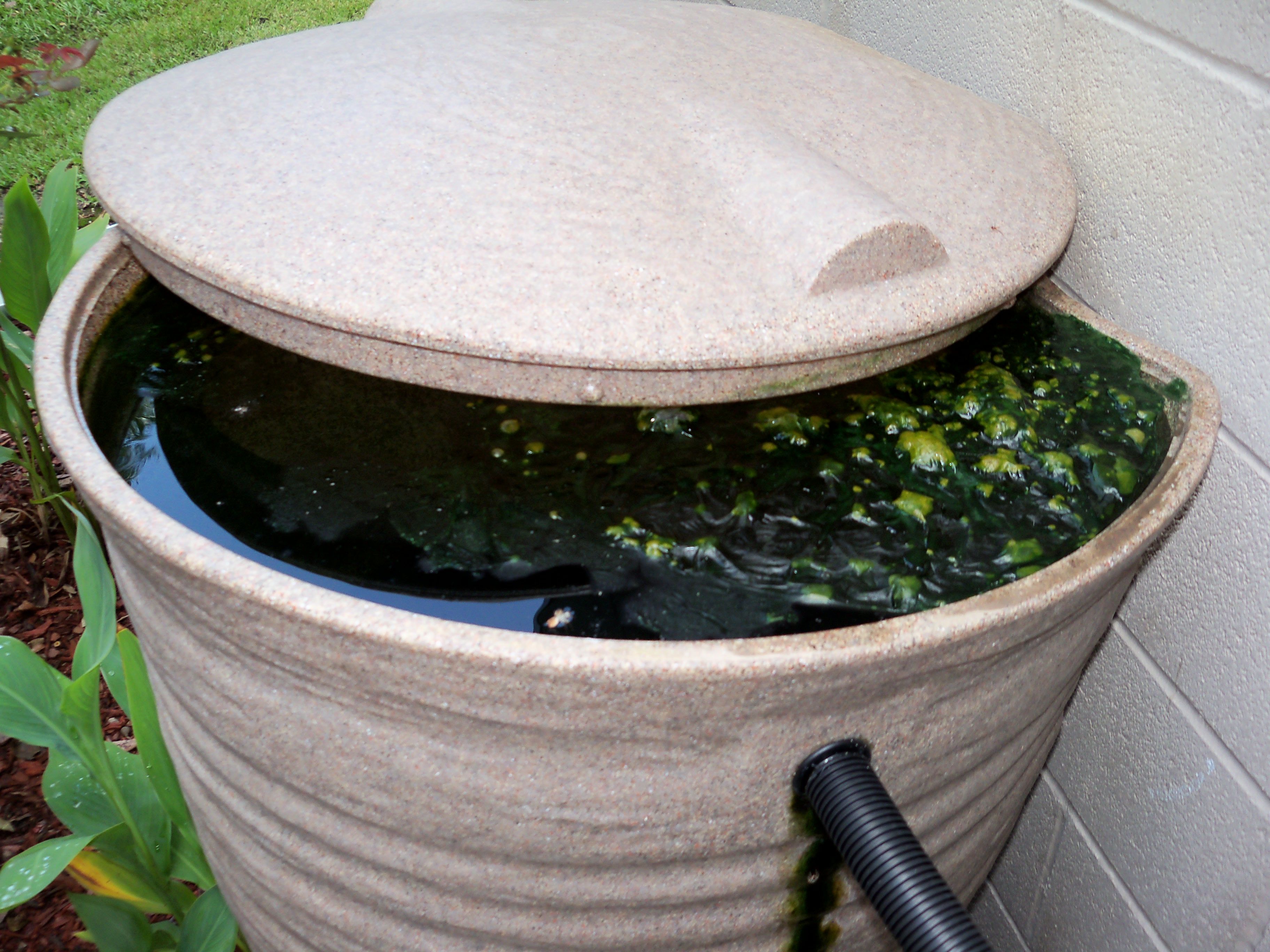Maintenance

Find information on operational considerations of rain barrel use which includes mosquito control, algae build up, and steps to winterize.
Over the course of its lifespan, a rain barrel may collect and accumulate sediment and organic debris. With a little extra time and effort, your system can be kept operational for many years. Here are a few quick tips for proper rain barrel hygiene:
General Considerations
- Best to use collected water within 7 days
- Empty, clean and dry once a month
- Disconnect if leaving home for an extended period of time
- Downspout filter must be cleared of debris periodically
Mosquitos
Here are a few options to help keep insects, particularly mosquitos, away from your rain water harvesting system:
- Ensure the barrel and all openings are properly covered
- Empty the barrel regularly
- Keep the top clear of standing/pooled water
- Use “Mosquito Dunks” – available at most hardware stores
Mosquitos can typically live in water for 3-7 days and require oxygen to survive. Try using several tablespoons of vegetable oil to create a barrier at the water surface.
Algae Build Up
Over time your rain barrel may collect and accumulate all sorts of sediment and organic debris that comes into your rain barrel from your roof source. If not properly maintained, particularly in humid regions, your rain barrel may provide an ideal habitat for algae growth. This layer of algae growth on the interior of the barrel walls can eventually end up settling to the bottom of the barrel causing clogs and even harm to your irrigated landscape. A little extra thought on the placement of your barrel and proper maintenance can help avoid some of these issues:
- Place barrels out of direct sunlight
- Use opaque barrels (so the walls shade the inside)
- Keep gutters clean (nutrients can leach into your barrel from the roof runoff)
- Clean barrel regularly
- Use harvested water frequently
If you need a little extra assistance removing stubborn algae using a dilute (2%) bleach solution, discharge bleach solution to sewer not plants.
Winterization
Rain barrels are typically used between March and October in temperate climates. In warmer parts of the US rain barrels can be used year-round. However, freezing temperatures can cause permanent damage to your system, particularly the diverter and spigot. Help keep your rain harvesting system out of disrepair by following these easy winterization steps:
Barrel Storage
- Drain your system – let gravity slowly empty the barrel
- Clean inside of barrel thoroughly:
- Prepare solution of 1/4 cup distilled vinegar or a 2% bleach solution, plus one teaspoon of mild dishwashing detergent
- Add warm water and scrub
- Wash it with clean water
- Dry barrel thoroughly
- Remove diverter and overflow hose
- The spigot should survive outdoor temperatures
- Store barrel inverted in the garage or basement
- Rest the upside-down barrel on bricks or concrete blocks if outdoor storage is required

Downspout
This step is critical if you cut your downspout to install your rain barrel! You will need to add a gutter extension to channel the water away from your house. If your rain barrel uses a diverter such as the flexi-fit-diverter found in the RainRecycle rain barrel kit or the Earthminded DIY rain barrel kit, there is a winter hole cover provided. Simply install it and you are done. If you do not have a winter hole cover, you can order one from the www.rainbarreldepot.com.